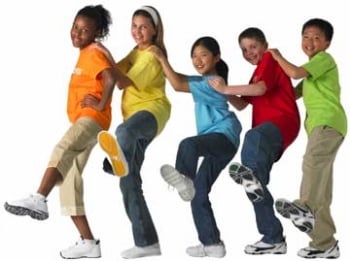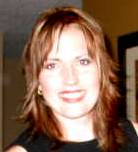“Those who danced were thought to be quite insane by those who could not hear the music.”
-Angela Monet

Is your dance card full? Throughout my life, I have literally danced. Danced on stage, danced in the living room, and danced with friends. These days, I dance with my sweet kids. Saturday mornings are so much fun with them stepping on my toes! Beyond the literal interpretation of ‘dance’, I know for sure that when you read the quote above, you will still find me on the dancing end. One example of my dance is my advocacy for telepractice as a means to increase access to services. What a blessing it is to hear the music and to feel the song.
Phonological Awareness
It is never too early to practice hearing the music of words. Phonological awareness is the ability to notice and work with the sounds in language. It requires listening and speaking skills. Likewise, it builds on the knowledge that sentences are made up of separate words, and that words are made up of separate parts. Strong phonological awareness skills lead to stronger reading and writing ability. Preschoolers who are ages three to five are ready to start exploring phonological awareness as a part of their early literacy program.
Examples of phonological awareness include repeating, identifying, and naming:
- Rhyming words (CAT – BAT)
- Words that begin or end with the same sound (PIG-PEN vs PIG-FISH)
- Parts of a word, such as syllables and sounds (BUTTER + FLY = BUTTERFLY)
- Syllables (te-le-phone)
The remainder of this document will pose two questions and answers, then outline some methods for incorporating awareness activities into your learning space.
QUESTIONS and ANSWERS
1. Why do you think playing with rhymes is important to early literacy development?
a. Exposure to rhyming words help children to recognize and eventually create words that rhyme, by learning that the ends of the words need to sound the same.
b. Learning how to make rhymes will help the children to predict words in a story.
c. Learning to create rhymes will help the children learn to spell.
d. All of the above.
Answer: d
Exposure to rhyming helps children to:
- Recognize and eventually create words that rhyme by learning that the ends of the words need to sound the same.
- Learn to read by predicting words while listening to a story – “The CAT sat on his H…” “The pig is wearing a w…”.
- Learn to spell by predicting the spelling of words. They will be able to problem solve through their spelling when they understand word families, such as -AT. (CAT, HAT, MAT, FAT, BAT, RAT, SAT…)
2. When playing activities that support phonological awareness, the children are indirectly learning that …
a. Sentences are made up of separate words and that words are made up of separate parts.
b. They need to learn to spell their name.
c. Environmental sounds, such as birds tweeting and horn honking, provide valuable information about our surroundings.
Answer: A
When playing activities that support phonological awareness, the children are indirectly learning that sentences are made up of separate words and that words are made up of separate parts. Later on, this knowledge will be extremely valuable to them when they learn to read and write. They will have a better understanding of how to break down sentences into words, and words into sound chunks when they are trying to read the information. On the other hand, they will be better equipped to build words from sound chunks, and sentences from words when they are trying to write their ideas.
Let’s continue the conversation. I have included some more information about phonological awareness below.
Tips for Supporting Phonological Awareness
- Rhyming Activities
- Read books with poetry and rhyming words. After you have read the book a few times, stop when you come to the second word that rhymes, and let the children fill in the word. “Brown bear, brown bear, what do you see? I see a yellow fish looking at __ (me)”. You could give them the sound hint “m__”.
- Sing or say nursery rhymes often. Repeat new rhymes several times, raising your voice on words that rhyme. Then leave off the end word and have children fill in the rhyming words. So much fun…especially if the children are free to include silly words. One song I remember from my childhood is ‘Down by the Bay, where the watermelon grow, back to my home, I dare not go, for if I do, my mother would say, “Have you ever seen a bear in his under ______”. Repeat for goose, goat, cat etc…
- Beginning Sounds of Words
- Invite children to make up new verses of familiar songs or rhymes by changing the beginning sounds of words: “Humpty Dumpty” to “Lumpty Gumpty.”
- Play word games that help children to hear beginning sounds of word. When possible, use children’s names in the games.
o Listening fun: Call each child’s name using the same letter. Baylor (Taylor), Bayden (Aiden), Bemma (Emma)…
o Transition: “If your name begins with the same sound as ball you may go wash your hands.”
o Book: “Willaby, Wallaby, Woo” by Raffi
o Song: “Banana, Fanana, Fo-fanana, Fee, Fi, Fonana, Banana” song.
- Same vs. Different Words
- Say two words and ask the children if you said the same word or if you said two different words. Keep the words similar so that children are challenged to listen carefully. Examples: “tea-key, gate-date, cut-cup, crow-grow; vase-face; book-hook.” Occasionally say the same word twice (cup-cup). The kids might have fun being the judges and holding up their sign (could be a happy face glued back to back with sad face onto a stick) to indicate same or different.
- Syllables in Words
- Clap or stomp syllables in children’s names.
- Rhyme: “Hickity, Tickity, Bumble Bee, Can you say your name for me?” (children clap
the child’s name in syllables) - Say a word and have children clap syllables touching parts of their body (head, shoulders, tummy, thighs, knees, toes) as they say each syllable of the word. Use short and long words and see how far down the body each word goes.
- Parts of Words
- What happens if you put together two words such as “butter” and “fly”, “pop” and “corn”, “school” and “bus”?
- What happens when you take the butter out of butterfly?
- Visual prompts such as manipulatives or pictures (butter and a fly) are helpful.
- Words in a Sentence
- Play games, sing songs, and do finger plays that require them to listen to key words in the sentence in order to participate in the song. (Hokey Pokey, Simeon Says, The Duke of York, Two Little Black Birds…)
- Say a sentence. Start with short sentences, such as “STOP!”, then “STOP THAT!” then “STOP THAT CAR!” Then have the children clap each word in that sentence with you. Count the number of words you clap. As children increase their awareness of this concept, increase the length of the sentences that you use.
- Alliteration (words that start with the same letter)
- Read books and play games with alliteration (Alice the alligator ate another apple. Billy Bob bought a bucket of busy bees).
- Make up a fun sentence for each child’s name by having them pick pictures from their sound buck. For example, Bailey would look in the B bucket and possibly pick out words like BEE and BED. You might have parts of a sentence that needs more words. ( ______ saw a ______ on the _____) What would Bailey come up with? Maybe “Bailey saw a bee on the bed”. Write their silly sentence on paper and ask them to draw a picture about it.
- Teach the children a visual sign for their sound. (i.e. Jolly Phonics, Visual Phonics, your ideas) Each time they say their sound, they also use their hand sign. This serves to support their understanding, recognition, and retrieval of the sound.
This link offers helpful information for supporting phonological awareness: http://fc.tvdsb.on.ca/~daryn.bee/pa/main.htm
If a school district in your area needs Speech-Language Pathologists, please let me know by email as we at TinyEYE can help!


Marnee Brick, MSc
Speech-Language Pathologist and Director of Speech Therapy
TinyEYE Therapy Services (Speech Therapy Telepractice)
http://www.TinyEYE.com-Online Speech Therapy Telepractice
School Districts: Recruiting Speech-Language Pathologists? Job Boards not working? Click this link!


